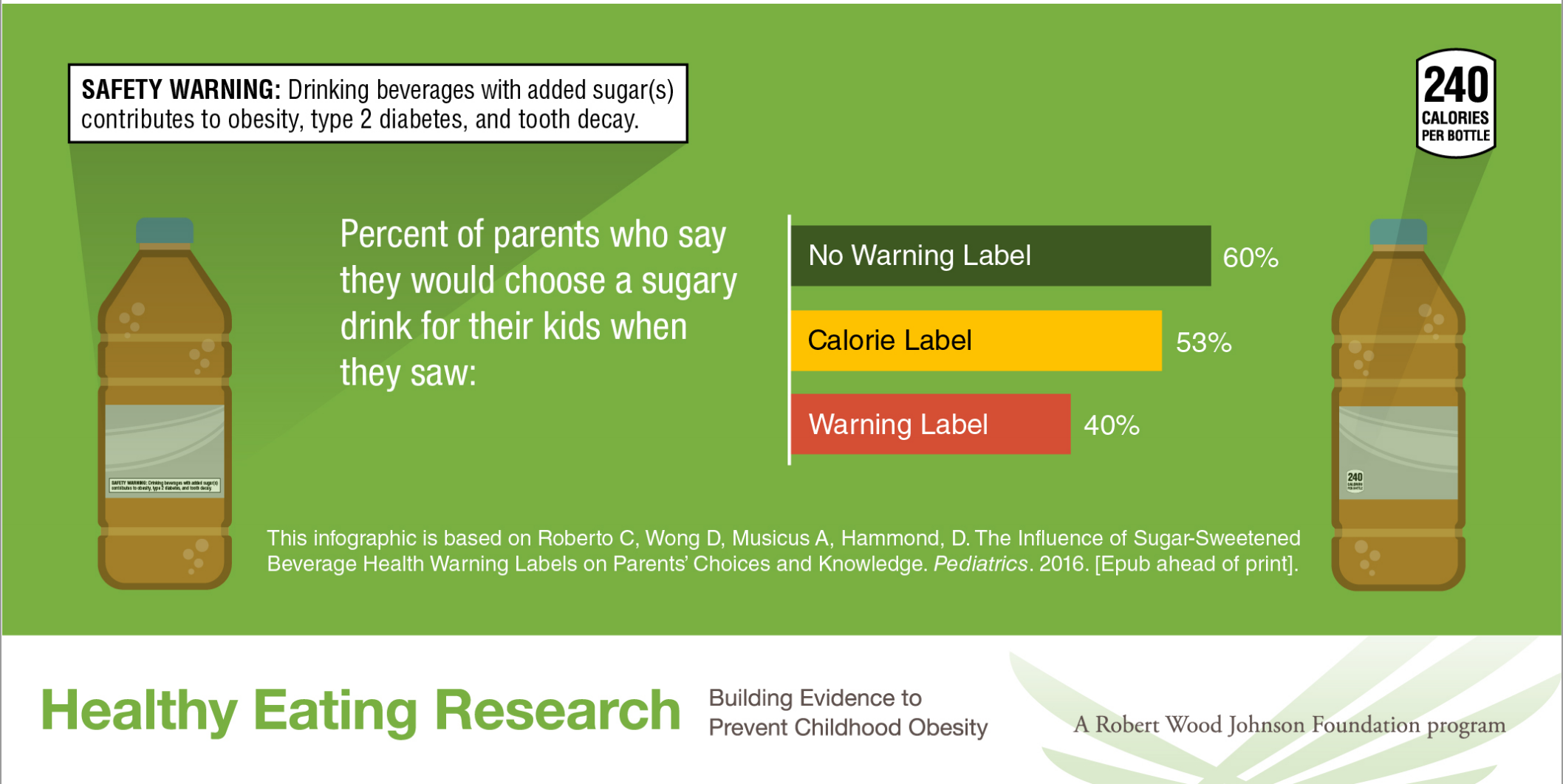In a new PEACH lab study led by Dr. Christina Roberto, we found that health warning labels may influence parents to purchase fewer sugary drinks for their children and may be an impactful way to educate parents about the health harms of over consuming sugary drinks. More than half of children under the age of 11 drink sugary drinks including soft drinks and juices that contain as many as seven teaspoons of sugar per 6.5 ounces—on a daily basis.
With growing concerns about the health affects associated with consumption of these beverages, some states have introduced bills requiring sugary drinks to display health warning labels similar to those found on tobacco products. Yet, there is little data to suggest how such labels might influence purchasing behavior or which labels may be the most impactful. This study provides some of the first data examining the potential influence of sugary drink warning labels.
In this study, we conducted an online survey of 2,381 demographically diverse parents with at least one child between six and 11 years old. Parents were divided into one of six groups—a control group, which saw no warning label on beverages, a “calorie label” group which only saw a label displaying the beverage’s calorie count, and four “warning label” groups, which saw one of four different labels warning about possible negative health consequences such as obesity, diabetes, and tooth decay—and asked to choose a beverage to purchase for their child.
While the different variations of the health warning labels did not differentially affect parents’ drink decisions, the presence of the label was significant. Regardless of education level, parents were significantly less likely to report choosing a sugary drink for their child when a warning label was present compared to a calorie count label or no label at all. Additional results suggest health warning labels improve parents’ understanding of the health dangers associated with overconsumption of sugary drinks and also found that nearly 75 percent of participants would support adding sugary drink warning labels to beverage containers.
Overall, the study results show that warning labels have the potential to educate parents and motivate behavior change in terms of purchasing sugary drinks. More questions on the effect of health warning labels, however, remained unanswered. More data are needed to understand their influence on purchasing and consumption behaviors. We also need to understand whether people will compensate for the calories they did not purchase because of the sugary drink warning label by purchasing other high-sugar foods that are unlabeled. Questions like this require further study to achieve a better understanding of the effects of warning labels on people’s purchasing and consumption behavior.
The study is published online in the journal Pediatrics. Funding for the study was provided by the Robert Wood Johnson Foundation.


